
So what is a yeast infection? This is a disease caused by fungi, the number of which is very large in nature. Today there are more than 200 different types of mushrooms. Where do fungi live and how does a person become infected?
Fungi are widespread in the environment. They live in the soil, on plants, they live on animals, and there is even a saprophytic species of fungi that happily coexists with us, i. e. they live on human skin. Human pathogenic fungi that affect the skin are called dermatophytes, and the diseases are called dermatomycoses.
Infection can occur in 2 ways: direct infection through contact with soil, plants, a sick animal or a sick person; indirect - in contact with various things and objects used by patients, also through animal care items.
Why does a yeast infection occur?
Susceptibility to fungal infection is determined by many factors: climatic conditions (hot season), state of the immune system, state of the skin and presence of concomitant diseases. Age, gender and occupational factors also matter. More often, of course, the manifestation of the disease occurs in the hot season, after returning from the seas, where a hot, humid climate prevails, accompanied by increased sweating.
These factors are particularly favorable for the introduction of pathogenic fungi and the transition of saprophytes into pathogenic flora.
What are the types of yeast infections?
There are basically 4 groups of fungal diseases:
They are quite superficial, as they affect the stratum corneum and cuticles of the hair without causing inflammatory reactions and do not affect the skin appendages (hair, nails). The most common disease of this group is pityriasis versicolor, or pityriasis versicolor. It manifests itself with the appearance of coffee and milk stains, mainly on the chest, back and shoulder girdle.
This is a large group of fungal diseases that affect the skin, hair and nails. The most common disease in this group is athlete's foot or athlete's foot. The disease is very common among the elderly population - about 80% have this disease.
A huge role in the prevention of fungal diseases is played by the treatment of shoes, the treatment of manicure and pedicure scissors with special antifungal agents, in the form of solutions and sprays.
It is also important to combat excessive sweating of the skin of the feet, if necessary. For treatment, depending on the severity.
The course and extent of the process use local and systemic antifungal therapy.
In the last few years, a modern method of treating fungal nail diseases (onychomycosis) has been successfully used - laser treatment of onychomycosis.
Prevention of fungal diseases
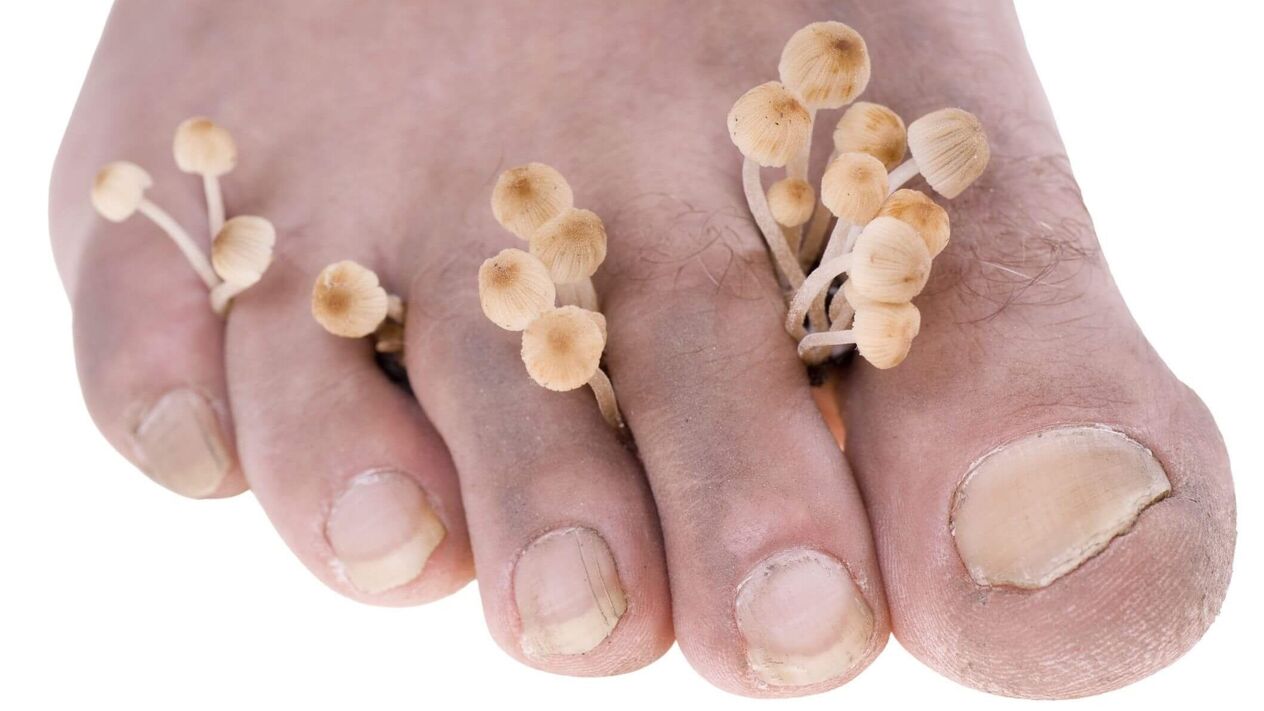
Fungal diseases, also known as mycoses, are infectious diseases caused by pathogenic fungi.
Fungal infections can affect a wide variety of organs. In this case, the symptoms can be very different, depending on which organ is affected and what type of fungus. There are many types of fungal infections, but the forms that affect the skin and nails are the most common. Mycoses are contagious diseases and are transmitted from person to person.
Fungal diseases can appear on any part of the human body: on the torso, on the limbs, on the scalp, on the palms of the hands, on the soles of the feet, between the fingers, in the groin and even on the face.
If a fungal disease is found in one family member, all family members should be carefully checked, and if it is a child, then those who take care of the sick child. It is also necessary to carefully check for the presence of fungal diseases, children entering children's homes, nurseries, schools and similar institutions.
It is especially important to screen students before leaving and after arriving from summer camps.
If you suspect the presence of mycosis, you should consult a dermatologist and be examined for fungi. Before the consultation, it is best to cut your hair short, this greatly facilitates the recognition of mycosis.
At the slightest suspicion of a fungal disease in a child, he should be prohibited from attending school or kindergarten. Immediately after confirming the diagnosis, treatment should be started, under no circumstances should the patient be allowed to come into contact with healthy children.
Any object touched by the patient can be contaminated and present a risk of transmission of infection or re-infection of the patient himself. Any such item must be disinfected or destroyed. Clothing is disinfected in a steam-formalin or steam-air chamber. Bed linen is disinfected by boiling for 20 minutes.
Prevention of fungal diseases in hairdressing salons, bathrooms and showers should be carried out regularly, at intervals of no more than 3 months. Metal objects should be thoroughly disinfected with dry heat, other objects in vapor formalin chambers.
Prevention of mycotic diseases in animals is of great importance, due to the fact that people are very often infected with trichophytosis and microsporia from animals.
It is necessary to create hygienic rooms and services for veterinary inspection in collective farms.
Persons who have been in contact with sick animals are advised to observe the rules of hygiene and monitor the condition of their skin, as they may become a source of further spread of infection both among humans and among animals.
Cats and dogs can be carriers of microsporum fluff, which is the source of microsporia disease. Animals suspected of carrying a fungal infection should be transferred to special veterinary institutions, but should never be simply thrown away, as they will spread the infection. But there are also known cases when the carriers were rats and mice.
Preventive measures are necessary to reduce the possibility of infecting healthy people so that they do not become carriers of a fungal infection. Systematic disinfection of premises is one of the most important points in the prevention process. It is done with a five percent chloramine solution, then everything is washed with a five percent soap solution.
Fungal skin lesions
Fungal skin infections are quite common diseases. It can affect any part of the body. To avoid diseases, sanitary and hygienic rules must be observed. Treating the fungus is a complex process, so do not delay your visit to the doctor.
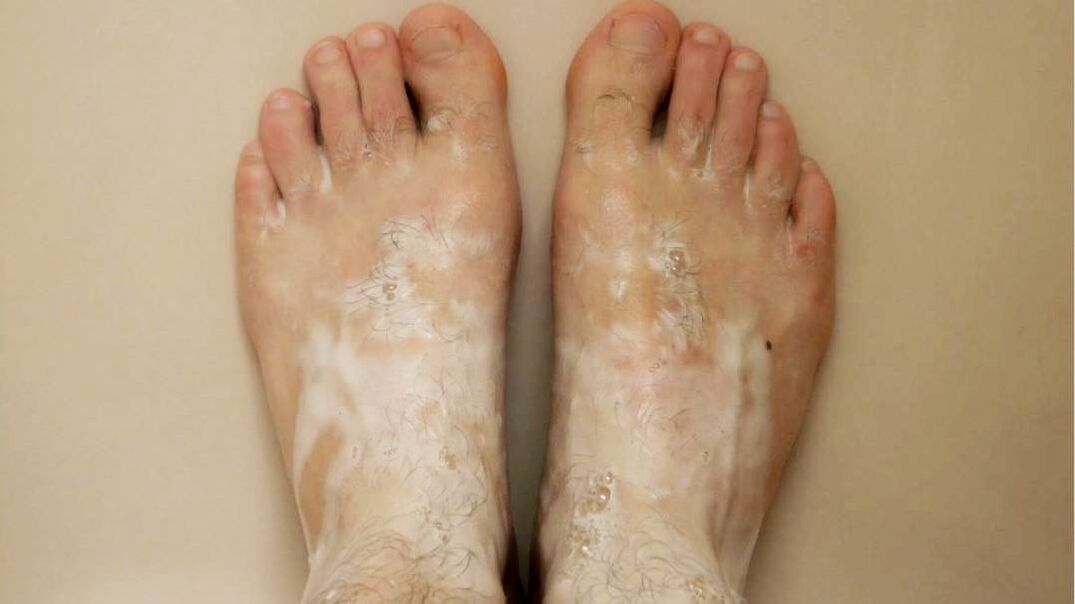
Preparations for the prevention of foot fungus
Fungus on the feet is an infectious disease accompanied by the appearance of blisters, peeling, itching, cracks, etc. To prevent the disease, you must maintain foot hygiene and use antifungal drugs.

Treatment of skin fungus
Fungi on the skin, or ringworm, often occurs in people with a weakened immune system. Affecting the skin, the disease often becomes chronic, reducing the body's ability to resist. There are different types of mycosis, treatment must be carried out individually.

Fungal diseases of the male genital organs
A separate type of male diseases are the fungal diseases of the male genital organs, which are characterized by a specific transmission - exclusively by sexual means. That is why it is extremely important to be careful about your health and to carry out prevention.
Prevention of fungal diseases. Methods for primary prevention of mycoses
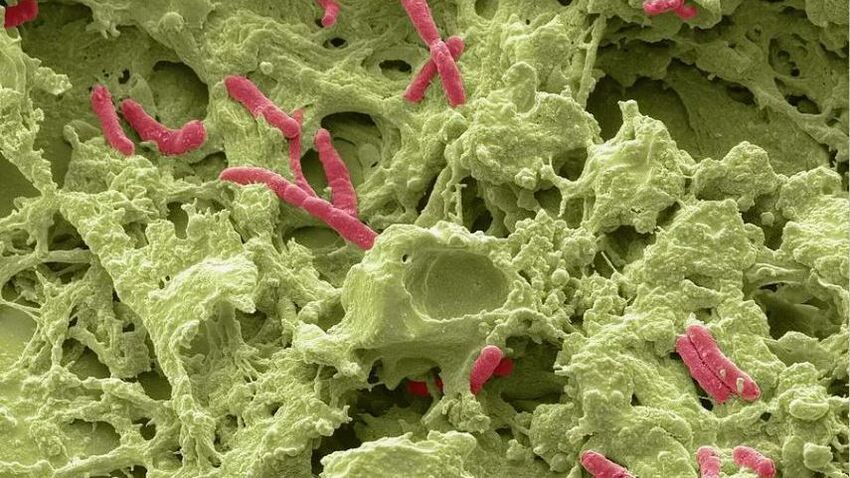
To prevent infection with a pathogenic fungus, you must follow several rules:
- Maintain personal hygiene. Every contact in public places must end with hand disinfection. To do this, just wash your hands well or apply an antiseptic solution.
- Public places should be visited with caution. Saunas, toilets, showers and bathrooms are a breeding ground for the spread of pathogenic microflora. Avoid contact with surfaces in such areas.
- Avoid contact with infected people or animals. This also applies to items used by patients.
The first sensations of discomfort on the skin or its appendages should not be ignored. It is better to visit a specialist who will determine the cause and be able to prescribe the right treatment.
Reasons for the development of mycosis of the feet
Athlete's foot is a skin lesion caused by a parasitic fungus. A very common disease in the population. The surface of the foot and its back, the space between the toes and the nails are affected.
The causative agent is the fungus Trichophyton, which has two varieties. The first is red trichophyton, the second is interdigital. The last type is the most common. According to the WHO, up to 30% of the inhabitants of developed countries suffer from dermatomycosis of the skin of the feet. This is related to the constant wearing of shoes, as a result of which the most favorable conditions for the development of foot fungus are created.
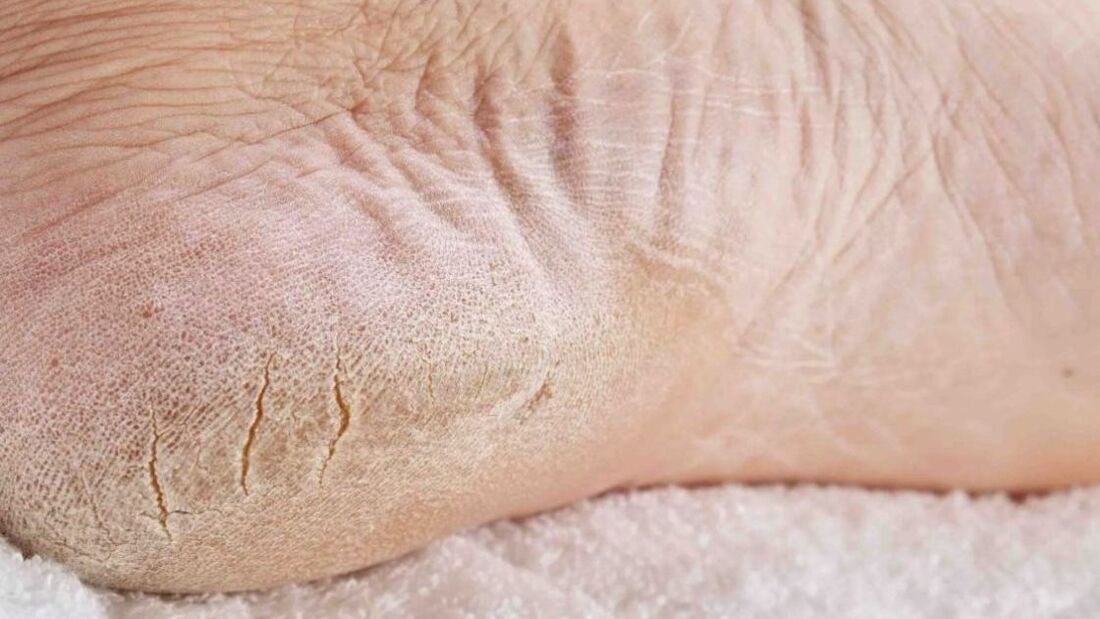
Causes of mycosis
The infection is mainly transmitted by contact - through personal belongings and household items. Keratinized skin particles contaminated with spores of pathogenic strains of fungi are a direct source of infection for others.
Microorganisms multiply most intensively in a moist environment. Walking barefoot in public places - baths, saunas, showers - creates prerequisites for mycosis infection.
Getting into microcracks, scrapes and diaper rash on human skin, the spores grow into the filamentous body of the fungus - the mycelium. Penetrates deep into the epidermis, creating lesions.
The reasons for the development of mycosis are:
- reduced immunity due to chronic diseases;
- diabetes;
- varicose veins, thrombophlebitis;
- age over 60 years.
These factors reduce the protective functions of the skin, opening access for pathogens to penetrate. At risk are metallurgists, miners, military personnel and athletes - all who, by duty or due to working conditions, are forced to constantly wear water- and vapor-resistant shoes.
Intrafamilial foot mycoses are common. Proximity to an infected family member is the shortest way to transmit a dangerous fungal disease.
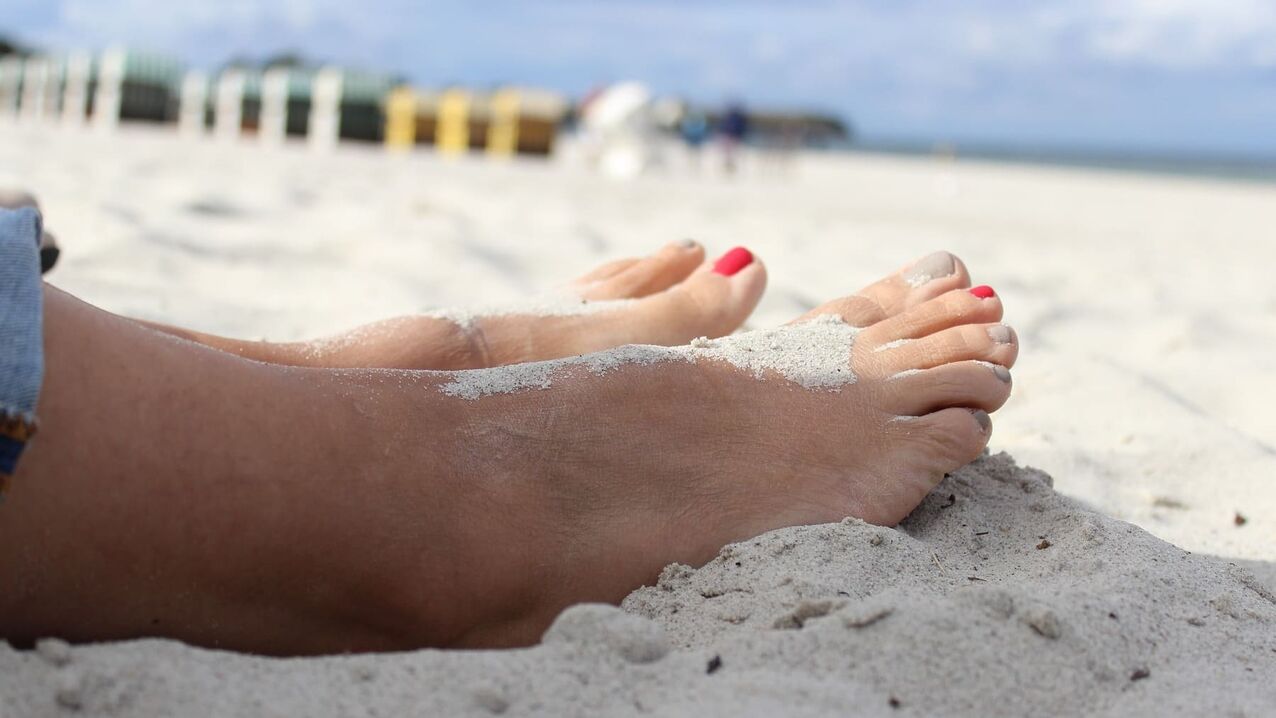
Symptoms of a fungal infection
Fungal diseases of the feet are manifested by various signs of destruction of the skin. Depending on the nature of the skin damage, the following forms of mycosis are distinguished:
- Deleted. The surface of the foot peels, a diaper rash appears between the toes. Itching is minor. Patients often do not attach any importance to this, considering the symptoms of the fungus to be an irritation, or use home remedies that are ineffective.
- Squamous-hyperkeratic. This shape is also called "moccasin foot" because of the rough, thick skin on the sole covered with cracks. The lesions on the skin are significant - it peels off in large scales, its color is gray-yellow. There is pain when walking, unpleasant smell. Most often, the disease affects the elderly.
- Wet (vesicular, dehidrotic). Its feature is the formation of small pink bubbles, which eventually merge into large bubbles. The disease begins in the arch of the foot, then spreads to the entire foot and toes. When the bubbles burst, they form foci of erosion. The skin swells and itches.
- Intertriginous. It is characterized by damage to the interdigital space. The skin relaxes, gets wet and swells. Severe itching and burning occur. Over time, deep, painful cracks form that interfere with normal walking.
- Spicy. A severe form of mycosis. It is characterized by fever, inflammation of the inguinal lymph nodes, swelling of the feet and legs. The legs are covered with blisters containing serous-purulent contents. After their opening, weeping erosions are formed, causing severe physical suffering to the patient.
Pathogenic fungi, feeding on the cells of the human body, release toxins that poison the body. The protective function of the skin and general immunity decrease. Lesions are open doors for bacterial and viral infections. Treating the fungus is a necessary condition for maintaining health and normal well-being.
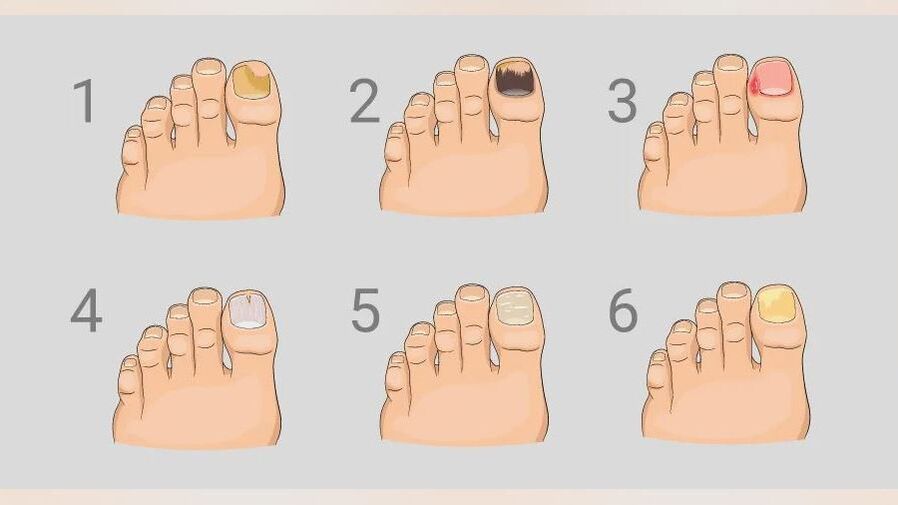
Diagnosis of foot mycosis
Diagnosis and treatment of fungal diseases of the feet is carried out by a dermatologist and a mycologist. The determination of the type of fungus is carried out by laboratory methods - examination of tissue samples under a microscope. A culture method for determining the type of pathogen is to place the inoculated material in a nutrient medium. At the same time, the causes of mycosis are determined. Conduct tests for HIV, blood sugar levels, STDs.
Based on the results, the doctor makes a diagnosis and prescribes treatment. This can be monotherapy or complex treatment with external means and tablets.
How to treat athlete's foot
Ringworm treatment is successful when the patient takes the medications and procedures responsibly. Modern drugs have a liver-sparing effect and effectively destroy the mycelium of pathological forms of the fungus.
In wet forms of fungus, the wounds are first dried with a solution of potassium permanganate, brilliant green, iodine or boric acid. In the treatment of this type of mycosis, drugs containing corticosteroids are indispensable. "Moccasin foot" is cleaned of keratinized layers by wrapping with salicylic acid. They soften the rough skin, which is easily cleaned after the procedure.
Treatment of foot fungus with folk remedies
Homemade formulations in the form of:
- foot baths;
- ointments;
- lotions;
- compresses.
- decoctions and infusions of medicinal herbs.
Baths take 15-20 minutes. The solution is prepared by adding acids - acetic, boric or a mixture of salt and soda. They soften the stratum corneum well. After the procedure, dry the leg and lubricate it with birch tar. After an hour and a half, remove the remaining medicine with a napkin. Course - from 3 to 5 times. Onions and garlic in the form of compresses well disinfect the surface of the feet. It is used in a mixture with oils. A decoction of oak bark, celandine juice, lemon and essential oils of tea tree or fir is effective for mild skin lesions.
important. Folk remedies have no contraindications, but their use is most effective in combination with drug treatment.
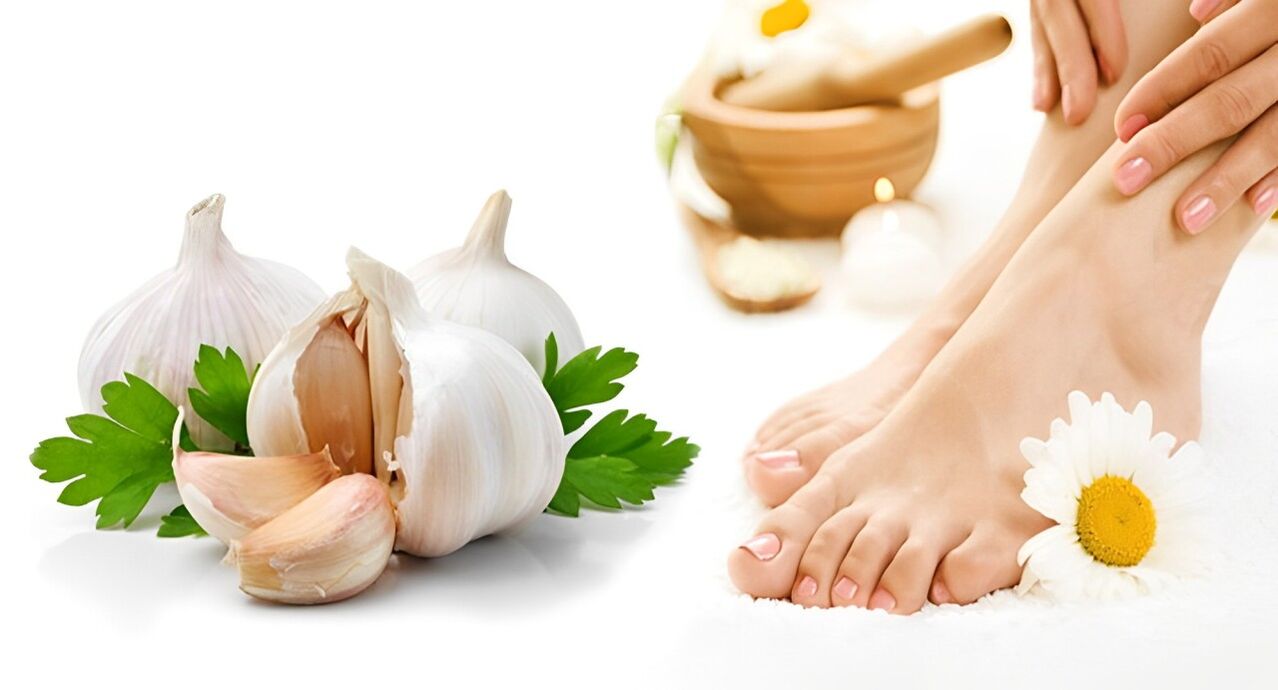
Consequences of foot mycosis
Like any infectious disease, tinea pedis affects the cells of the human body. Penetrating the thickness of the skin and feeding on its components, the mycelium grows in the epithelial layers. This does not go unnoticed by the body. Local and general immunity decreases. Allergic reactions and exacerbation of asthmatic manifestations are possible. Bacterial and viral infections penetrate open wounds. Fungal infections can be accompanied by more serious illnesses.
important. Mycosis of the feet poses a danger both to the carrier of the dermatophyte and to its immediate environment. People in poor health are most susceptible to contracting fungal diseases. It is necessary to cure the fungus to protect yourself and others.
Prevention of foot fungus
The main preventive measures should be aimed at:
- avoiding contact with possible sources of fungal infection;
- maintenance of personal hygiene;
- maintaining a healthy lifestyle;
- treatment of chronic diseases.
If signs of mycosis of the foot appear, you should consult a specialist doctor and carry out the prescribed treatment. If preventive measures are taken, cases of return of fungal disease on the skin of the feet are quite rare.
Fungal infection in the body: symptoms and treatment
The human body is inhabited by many viruses, fungi and bacteria. All of these microorganisms can be beneficial, opportunistic, or pathogenic. In addition, the last two species do not cause harm, as long as a certain balance is maintained between the microorganisms
Fungal infection
The human body is inhabited by many viruses, fungi and bacteria. All of these microorganisms can be beneficial, opportunistic, or pathogenic. In addition, the last two species do not cause harm, as long as a certain balance is maintained between the microorganisms.
The greatest danger is the fungus - a microorganism that can cause damage to the skin and internal organs of a person. There are about 500 species of fungi that cause mycosis in humans. What fungal infections can cause serious diseases in humans and what treatment methods are used to get rid of pathogenic microorganisms?
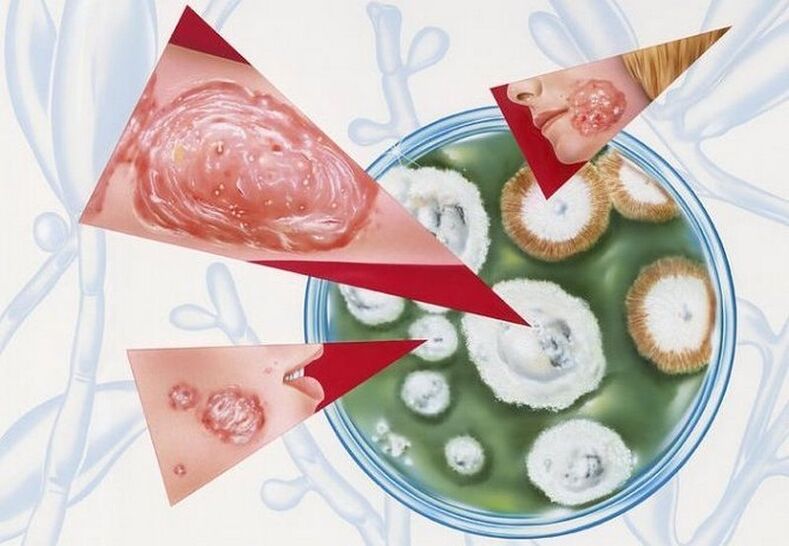
Types of fungi
All fungi that can live in the human body are divided into several types:
- yeast;
- musty;
- domiphorous.
Fungi are multicellular
Yeasts live in the human body, being part of its microflora. They belong to opportunistic species, as they do not pose a threat to health, provided a balance is maintained. All other types of fungi are pathogenic and pose a real threat to human health and life.
Fungi can multiply both on the surface of the skin and nails, and inside the body. However, a healthy person, as a rule, is not affected by a fungal infection, because it is destroyed by the cells of the immune system. Therefore, the most favorable conditions for the functioning of fungi are created in the body of people with weakened immunity.
Features of cutaneous mycosis
The skin very often suffers from fungal infections. Moreover, it spares neither women, nor men, nor children. This disease is divided into several main groups:
- athlete's foot;
- dermatomycosis;
- sporotrichosis;
- candidiasis;
- ringworm.
Athlete's foot is a fungal disease caused by a fungus of the genus Epidermophyton. It mostly affects men. With athlete's foot, not only the upper layer of the skin is affected, but also the nails.
There are two forms of this disease:
- mycosis of the inguinal legs;
- athlete's foot
Dermatomycoses are a whole group of fungal skin infections that affect every fifth person on the planet. In this case, mycosis can develop not only on the skin, but also in the internal organs.
Sporotrichosis is a chronic fungal disease caused by fungi of the genus Sporotrichium. Infection occurs through contact with grass, bushes, soil, street dust and even food. In this case, the skin and subcutaneous tissue are most often affected. Mucous membranes and internal organs are very rarely exposed to the fungus.
Candidiasis is caused by yeast of the genus Candida. These microorganisms are part of the healthy microflora and perform important functions in the human body. However, when favorable conditions are created, Candida fungi begin to multiply actively, disrupting the balance of bacteria, which leads to the development of candidiasis. Most often, candidiasis or thrush occurs in the vagina in women and in the mouth in children.
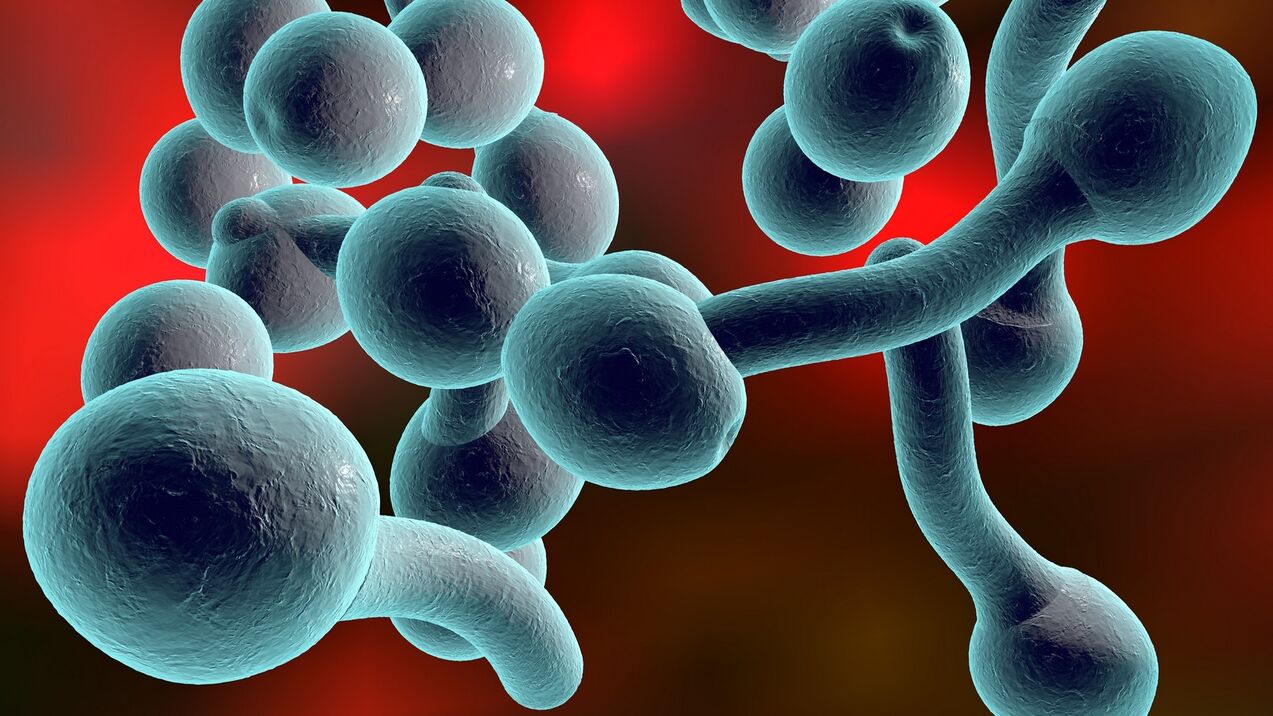
Causes of fungal infection
The development of a fungal infection is facilitated by contact with a source of fungi. For example, their spores can be in the air, on the floor surface or in bird droppings. At the same time, in order to reproduce, fungi need a special environment, which is created when the body's protective functions are reduced.
Although athlete's foot can affect anyone, there are certain populations that are most susceptible to developing the condition.
They include:
- people who have undergone organ transplant operations;
- cancer patients, as well as people who have undergone chemotherapy and radiotherapy;
- people suffering from diabetes and lung diseases.
Fungi can grow on the surface of the skin. But the favorite places for dislocation are the folds of the skin, the bends of the arms and legs, that is, all the places where there is high humidity and body temperature. Mycosis can spread to a small area, for example, between the fingers or toes. But some fungi are capable of infecting deep tissue layers. If mycosis develops in the lungs, it enters the bloodstream, which leads to damage to internal organs.
Coccidioidomycosis
This disease is caused by a fungus of the genus Coccidioides imitus that lives in the soil. This microorganism is common in the driest regions of America, Africa and Mexico. It enters other countries along with goods delivered from those countries.
Signs of coccidioidomycosis
The first symptoms of the disease resemble ARVI and inflammatory processes in the lungs and bronchi. The presence of fungi is indicated by the following signs:
- slight increase in body temperature;
- chills;
- headache;
- I feel tired;
- general weakness of the body.
Later these symptoms are joined by chest pain, shortness of breath and a dry cough. A few weeks after the pulmonary manifestations of the disease, the patient develops skin rashes in the form of papules or nodules that resemble warts.
Histoplasmosis
This disease is caused by the fungus Histoplasma capsulatum, which most often affects the lungs. In some cases, the fungus spreads to other organs, which in the absence of treatment leads to the death of the patient. People suffering from AIDS are susceptible to this disease because of the vulnerability of their immune system.
Signs of histoplasmosis
The acute form of the disease is most often asymptomatic, which makes it difficult to diagnose and delays the start of treatment. In severe cases, patients experience the following symptoms:
- increase in body temperature to 40°-41°C
- chills followed by profuse sweating;
- severe headache and muscle pain;
- chest pain;
- dry cough;
- general weakness.
If left untreated, the disease becomes chronic.
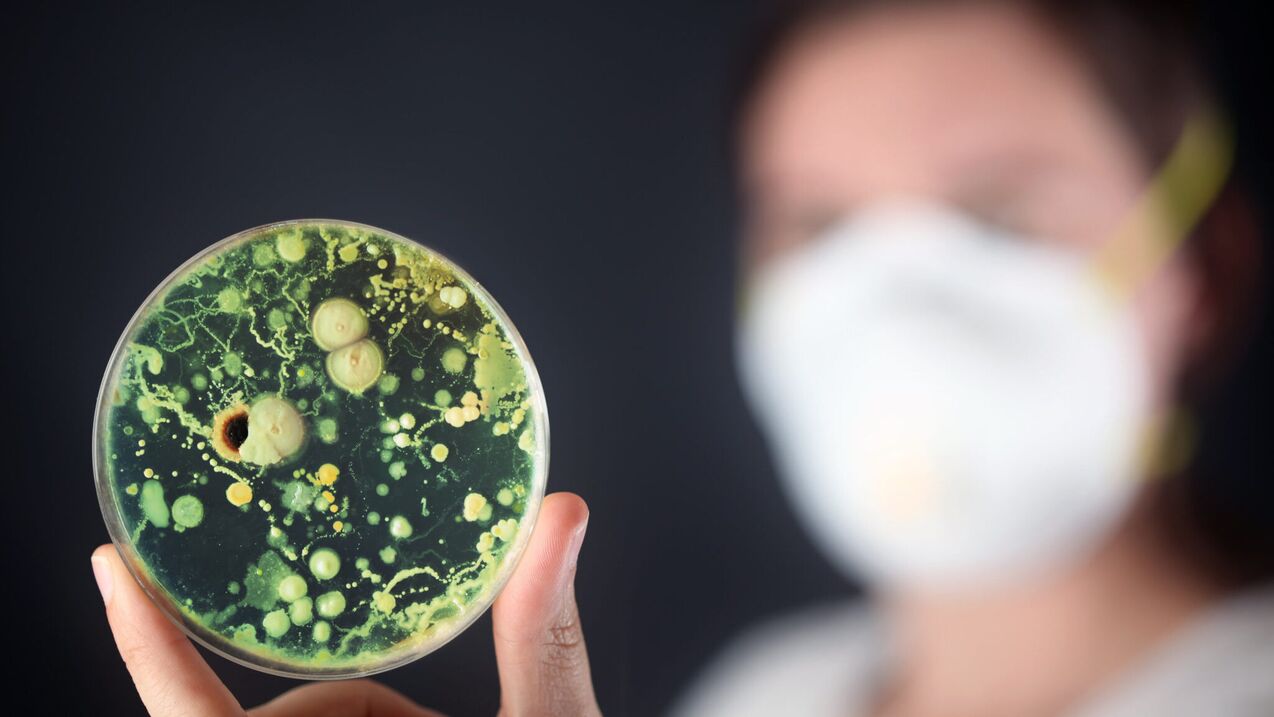
Features of the treatment of a fungal infection
The treatment of any fungal infection includes internal administration of antimycotic drugs, as well as symptomatic therapy to improve the general condition of the patient. In severe forms of the disease, drugs are administered intravenously. The duration of treatment depends on the type of fungal infection and the severity of the disease. It generally varies from 1 to 3 months. In addition, patients are prescribed drugs that strengthen the body's immune system.
Preventive actions
Fungi are insidious microorganisms that are difficult to destroy. Therefore, any infection is easier to prevent. First of all, it is necessary to strengthen the immune system, which will allow it to independently fight against any pathogens.
It is also recommended that you adhere to the following rules:
- maintain personal hygiene, wash your hands before eating, after every visit to the toilet and public places;
- wash vegetables and fruits well;
- animal food must be subjected to prolonged heat treatment;
- eat rationally, minimizing the consumption of simple carbohydrates and sugar;
- monitor body weight;
- take antibacterial and hormonal drugs only according to a doctor's prescription;
- use condoms during intercourse.
It is very important, if you find several signs of a yeast infection, to consult a doctor and undergo a full body examination.
Modern dermatology has a number of antifungal drugs that are harmful to fungi and are not toxic to the human body. They exist in different dosage forms: for local and systemic administration.























